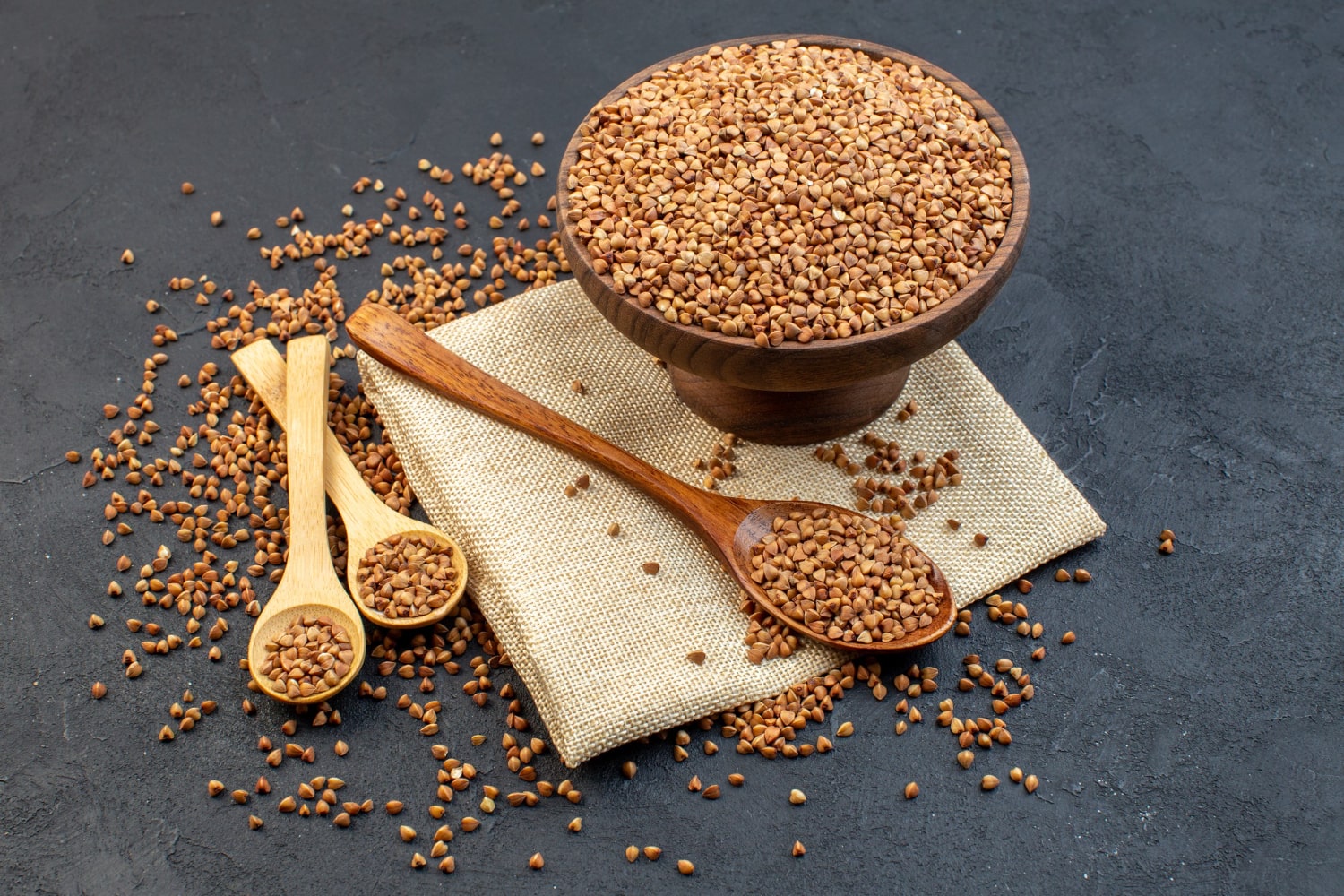Buckwheat is one of the most beloved and popular grains in many countries, especially in Ukraine. Its unique taste, health benefits and rich nutritional profile have made it a true symbol of healthy eating. Interesting facts about this crop can surprise even those who eat it almost every day, as behind its simple appearance lies a rich history and many valuable features. You may not know that buckwheat does not belong to cereal crops, yet it holds a special place among the most valuable food products. Now let’s explore fascinating facts that will help you see this grain in a new light.
- Buckwheat is actually the fruit of a plant belonging to the knotweed family, not cereals. This means that botanically it is closer to rhubarb and sorrel than to wheat or rye. This feature makes it a gluten-free product suitable for people with coeliac disease or gluten intolerance.
- The origin of buckwheat is linked to the mountainous regions of India and Nepal, from where it spread to China, Korea and Japan. Later it reached Central Asia and then Europe. Archaeological findings show that people began cultivating buckwheat more than 6,000 years ago.
- In medieval Europe, buckwheat was considered exotic and even a delicacy. It was not available to everyone, as it was grown in relatively small quantities. Its popularity increased significantly only after it began to be cultivated on a large scale in Eastern Europe and Russia.
- The name “buckwheat” in Slavic languages is related to the fact that the crop came to these lands through Byzantium and Greek merchants. In many European languages it has other names, for example in English – buckwheat, in French – sarrasin, reflecting different historical associations.
- Buckwheat is highly nutritious as it contains a full set of essential amino acids. In terms of protein content, it surpasses most grains, and its proteins are easily absorbed by the human body. It is also rich in iron, magnesium, manganese and B vitamins.
- This crop is resistant to unfavourable growing conditions and does not require large amounts of fertilisers. Buckwheat grows quickly, suppresses weeds and is almost never affected by pests, which is why its cultivation is often considered environmentally friendly. This makes it popular among farmers who aim to minimise the use of chemicals.
- Buckwheat does not need much water to grow, so it can be cultivated even in regions with a relatively dry climate. It grows well on poor soils where other crops produce low yields. This is one reason for its prevalence in mountainous areas.
- Buckwheat is used not only for groats but also for flour, which is used to make pancakes, noodles and bread. In Japan, a popular dish is soba – thin noodles made from buckwheat flour, served both cold and hot. In France, traditional pancakes called galettes are made from it.
- Buckwheat honey, produced from the nectar of its flowers, has a dark colour and rich aroma. It is high in antioxidants and valued for its healing properties. This type of honey is especially beneficial for supporting the immune system and during colds.
- In folk medicine, buckwheat was used not only as a food product but also as a remedy. The plant’s leaves and flowers were used to make infusions that supported vascular health and strengthened the body. Due to its rutin content, buckwheat improves the elasticity of capillary walls.
- Buckwheat has a low glycaemic index, which makes it beneficial for people with diabetes. It helps maintain stable blood sugar levels and prevents sharp spikes in glucose. This is another reason why nutritionists recommend including it in a healthy diet.
- Roasted buckwheat, known as groats, has a richer taste and aroma than unroasted. In Eastern European countries, this version is the most popular, while in Japan or Korea, green unroasted buckwheat is more common. Each type has its own culinary advantages.
- Buckwheat contains a significant amount of dietary fibre, which helps regulate the digestive system. Regular consumption helps maintain healthy gut microflora and prevents constipation. It also provides a lasting feeling of fullness, which helps with weight control.
- In China, buckwheat is considered a symbol of longevity and good health. It is served during New Year celebrations and as part of the wedding table. This tradition is linked to the belief that the crop brings good luck and prosperity.
- There are even ornamental varieties of buckwheat grown for their beautiful white or pink flowers. Such plants attract bees and decorate fields and gardens. They can also be used as green manure to improve soil fertility.
Buckwheat is a product in which health benefits, affordability and culinary versatility combine in an exceptional way. Fascinating facts about this crop show that it has not only nutritional but also cultural and historical value. You may not know it, but every grain of buckwheat holds a part of the traditions and experience of many generations. It is worth appreciating not only for its taste but also for the remarkable journey it has made from the mountain slopes of Asia to our tables.





